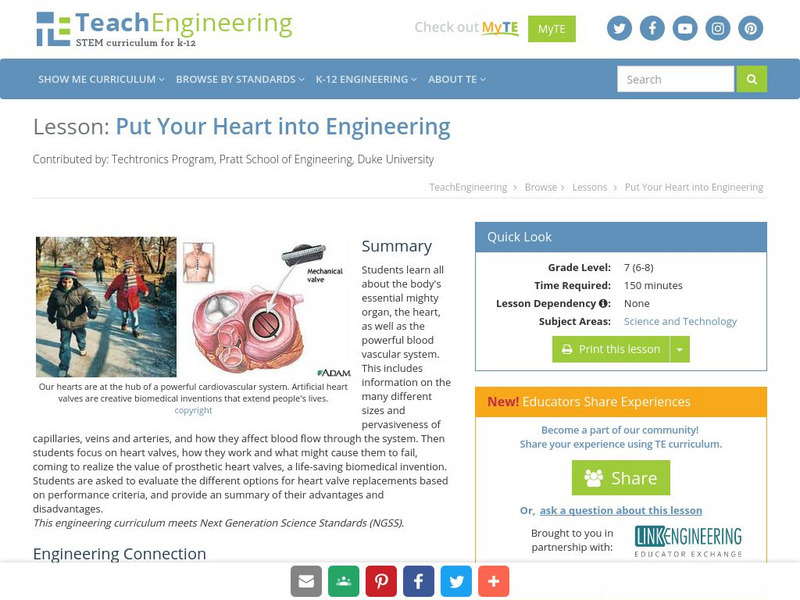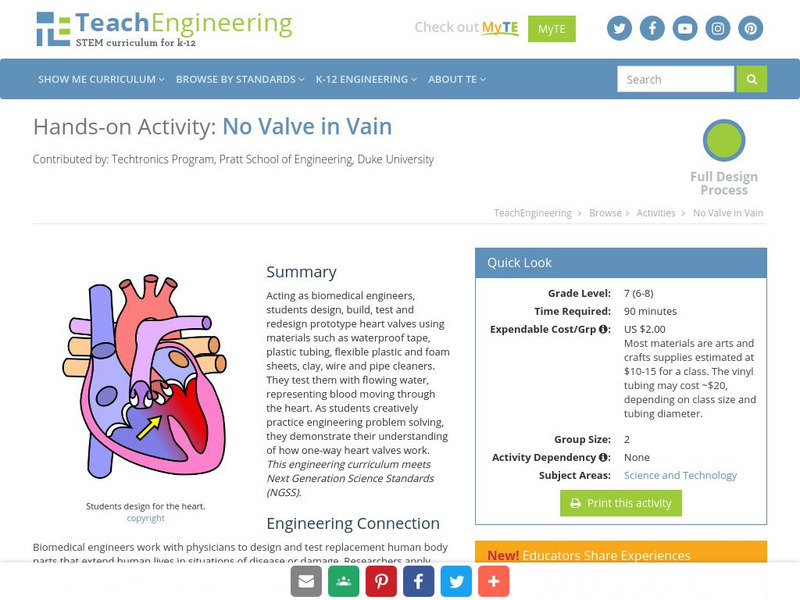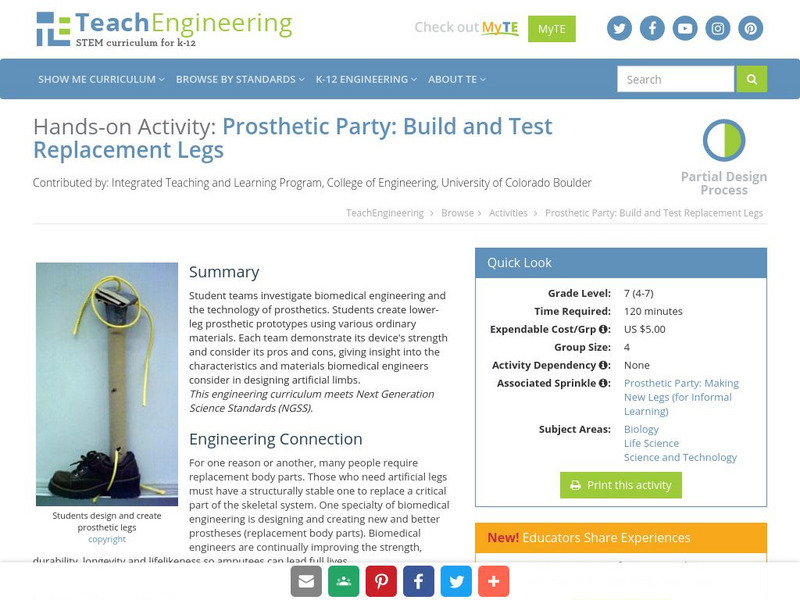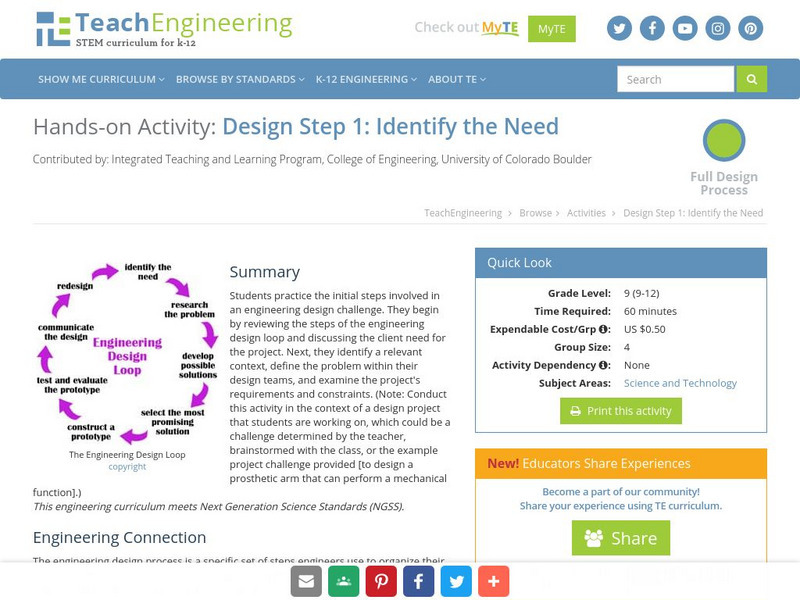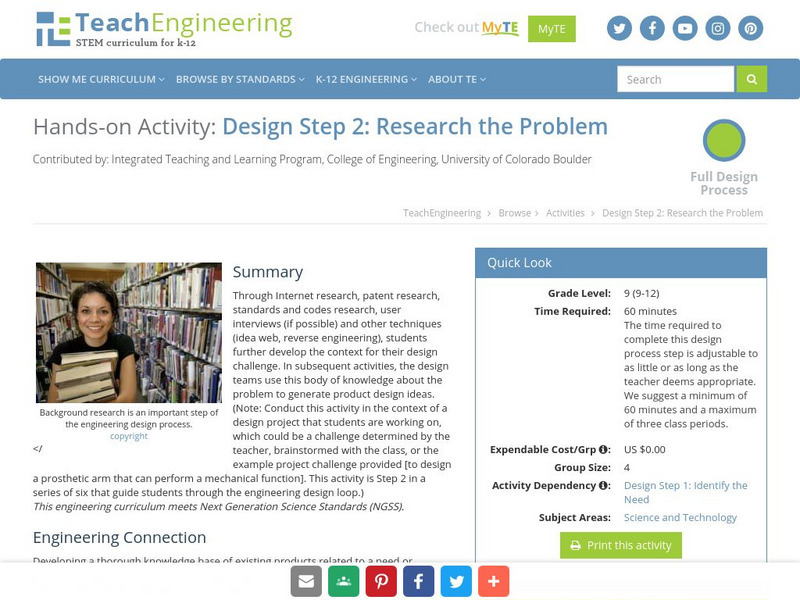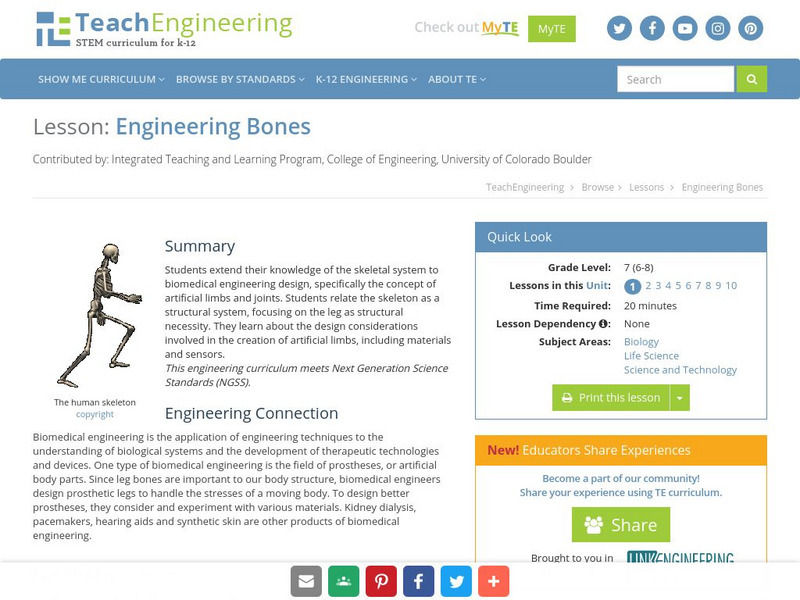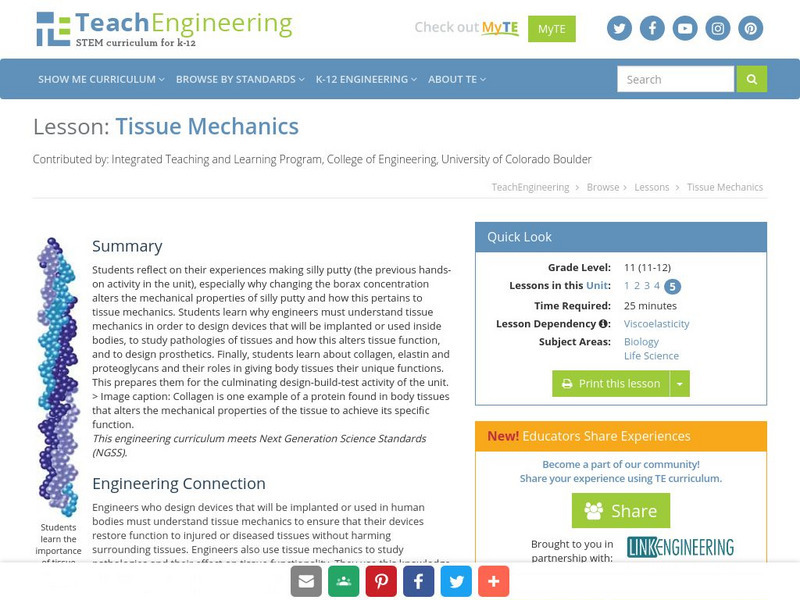Curated OER
Workshop: Health Challenge
Students conduct Internet research in order to better understand the concepts of sustainable health design. In this design and architecture lesson, students gather data and creat a materials kit that responds to the challenges of health...
Curated OER
Strong as the Weakest Link
Students discover the types of stress that materials undergo. They examine how bridges and skyscrapers are built to withhold the tension. They create their own structure out of marshmallows and spaghetti.
TeachEngineering
Teach Engineering: Put Your Heart Into Engineering
This lesson contains background about the blood vascular system and the heart. Also, the different sizes of capillaries, veins, and arteries, and how they affect blood flow through the system. We will then proceed to talk about the...
TeachEngineering
Teach Engineering: No Valve in Vain
In this activity, students will design and create their own heart valves out of a variety of materials given to them, including: waterproof tape, plastic tubing, flexible plastic sheets, foam sheets, scissors, clay, etc. This activity...
TeachEngineering
Teach Engineering: Prosthetic Party
Student teams investigate biomedical engineering and the technology of prosthetics. Students create a model prosthetic lower leg using various materials. Each team demonstrate its prosthesis' strength and consider its pros and cons,...
TeachEngineering
Teach Engineering: Surgical Device Engineering
This unit focuses on teaching students about the many aspects of biomedical engineering (BME). Students will see that it is a broad field that relies on concepts from each of the other disciplines of engineering. They will also begin to...
TeachEngineering
Teach Engineering: Design Step 1: Identify the Need
Students practice the initial steps involved in an engineering design challenge. They begin by reviewing the steps of the engineering design loop and discussing the client need for the project. Next, they identify a relevant context,...
TeachEngineering
Teach Engineering: Creative Engineering Design
Students are introduced to the world of creative engineering product design. Through six activities, teams work through the steps of the engineering design process (or loop) by completing an actual design challenge presented in six...
TeachEngineering
Teach Engineering: Design Step 2: Research the Problem
Through Internet research, patent research, standards and codes research, user interviews (if possible) and other techniques (idea web, reverse engineering), students further develop the context for their design challenge. In subsequent...
TeachEngineering
Teach Engineering: Engineering Bones
Students extend their knowledge of the skeletal system to biomedical engineering design, specifically the concept of artificial limbs. Students relate the skeleton as a structural system, focusing on the leg as structural necessity. They...
TeachEngineering
Teach Engineering: Muscles, Oh My!
Young scholars are introduced to how engineering closely relates to the field of biomechanics and how the muscular system produces human movement. They learn the importance of the muscular system in our daily lives, why it is important...
TeachEngineering
Teach Engineering: Tissue Mechanics
Students reflect on their experiences making silly putty (the previous hands-on activity in the unit), especially why changing the borax concentration alters the mechanical properties of silly putty and how this pertains to tissue...
TeachEngineering
Teach Engineering: An Arm and a Leg
Students will design and build a prototype of an artificial limb using a simple syringe system as an introduction to bioengineering. Students will determine which substance water (liquid) or air (gas) will make the appendage more efficient.
National Science Foundation
National Science Foundation: Science of Summer Olympics
Using examples of athletes and sports involved in the 2012 Summer Olympics, these 9 videos demonstrate aspects of sports which are influenced by engineering and technology.
Read Works
Read Works: A New Tail
[Free Registration/Login Required] This passage is about Winter, a dolphin who got caught in a crab trapline and lost his tail, and how they made a prosthetic tail for him so he could swim. A comprehension question set and a vocabulary...
Scientific American
Scientific American: Controlling Robots With the Mind
This seven-page article, published by Scientific American, explores how people may someday command wheelchairs and prosthetic devices by "thinking them through" the motions.




